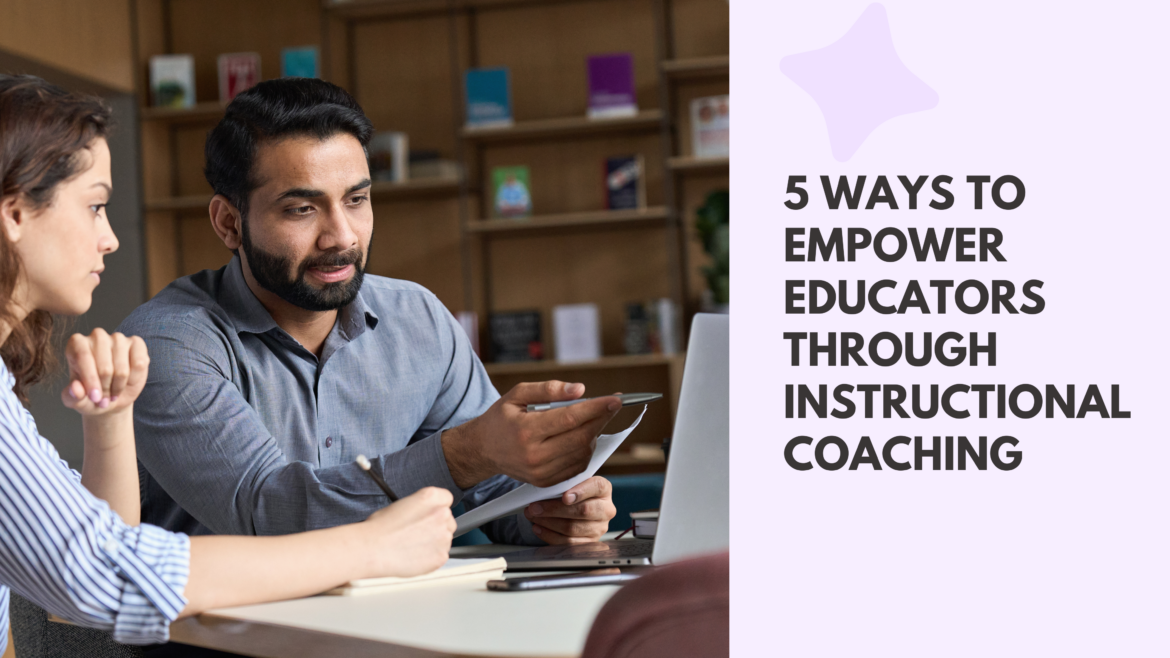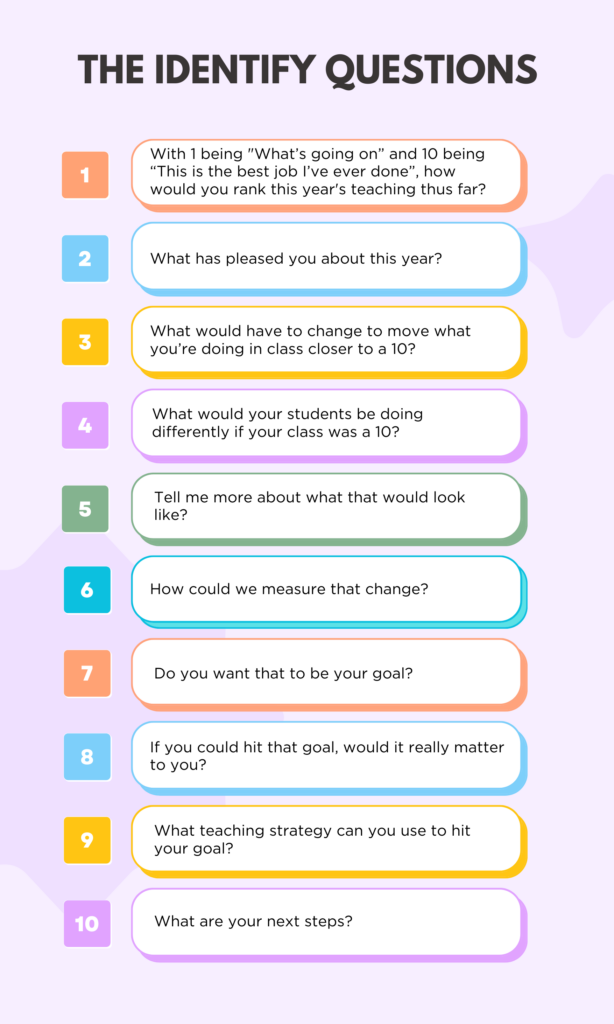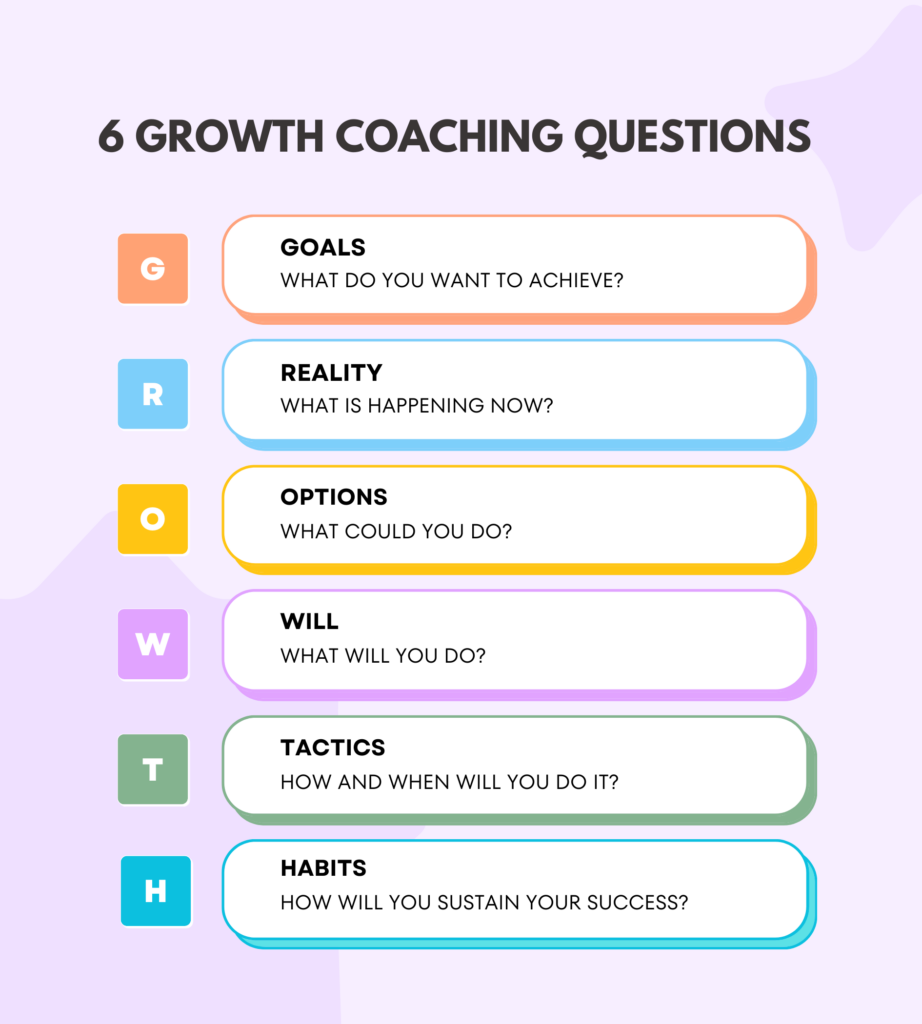Have you heard the statement that educators are 99% likely to transfer to practice when professional development elements are combined with instructional coaching (Joyce and Showers, 2002)? In our experience in Northside ISD Academic Technology, we have found that coaching makes an impact on student outcomes, and more importantly, builds teacher efficacy. Let’s take a look at five ways coaches can empower educators.
1. Coaching as a Partner
Instructional coaching provides a powerful formula for improving teacher efficacy. An effective instructional coach will develop a strong partnership with educators. This partnership provides a safe environment for teachers to engage in goal-setting, learning, and reflection. Many times, professional learning can be overwhelming for teachers for a number of reasons including competing priorities and lack of time. However, instructional coaches can walk side by side with teachers throughout the learning process in real-time to support iterations of growth. Here in Northside, we utilize Connecthub.io to track and monitor teachers’ progress and our own efficacy as trusted partners. Connecthub.io offers a forever-free (basic) account with half the features available and a pro account that offers additional data insights.
2. Goal Setting
Through effective communication and shared collaborative experiences, coaches can support teachers in breaking down large goals into smaller ones, creating more attainable and accessible targets, thereby increasing teacher confidence to encourage responsible risk-taking. This coaching formula of “goal + partnership = teacher success” becomes a recurring process that educators are intentionally engaged in and excited about. At the same time, they feel competent to invent future improvements in their classroom.
Our coaches rely on Jim Knight’s “Impact Cycle” and Growth Coaching International’s “Growth” model. We have found both models to be successful in partnering with teachers to make an impact. Both use questioning to help teachers identify their currency reality and set a meaningful teacher or student-centered goal. In the art of coaching, coaches are aware of and can apply various methods to help teachers set and reach goals.
The Identify Questions – Impact Cycle Checklist
- With 1 being “What’s going on” and 10 being “This is the best job I’ve ever done,” how would you rank this year’s teaching thus far?
- What has pleased you about this year?
- What would have to change to move what you’re doing in class closer to a 10?
- What would your students be doing differently if your class was a 10?
- Tell me more about what that would look like?
- How could we measure that change?
- Do you want that to be your goal?
- If you could hit that goal, would it really matter to you?
- What teaching strategy can you use to hit your goal?
- What are your next steps?
Growth Coaching Questions
- (Goals) – What do you want to achieve?
- (Reality) – What is happening now?
- (Options) – What could you do?
- (Will) – What will you do?
- (Tactics) – How and when will you do it?
- (Habits) – How will you sustain your success?
3. Coaching with Differentiated Support
Time and time again we have seen successes in classrooms when coaches deliver individualized and differentiated teacher support. It is important to recognize that no two coaching cycles are the same, even when it involves the same teacher and coach partnership. Just as no two journeys are the same, the path to reaching differing goals is as unique as the goals themselves. The only thing that remains is the partnership between teachers and coaches. During the process, it is critical to provide opportunities to identify progress every step along the way. Each coach tailors resources not only for the teacher they are collaborating with but also for their own personal “coaching craft.” These guide posts allow teachers to look back on where they started and celebrate progress while adjusting goals as needed.
4. Providing Engaging Experiences
To facilitate learning, instructional coaches need to guide teachers through a variety of engaging experiences in order to meet their unique goals. Sometimes the process involves observing master teachers, co-teaching, planning support, and discussing strategies and tools that promote efficiency. However, we use the motto “All Roads Lead to Coaching,” so we also try to engage and excite teachers with a variety of approaches!
Here are just a few great examples of engaging experiences:
- Mini-conference: Teacher Panels at our Innovation and Digital Learning Conference
- Twitter #edchat: #NISDedchat
- Podcast Episode: NISD Innovates with Matt Miller
- Collaborative Book Studies: Engaging with authors like Stacey Roshan and “Tech with Heart”
5. Reflection for Teachers and Coaches
Possibly the most important part of the coaching process is the celebration of goal completion. Crossing the finish line fills teachers’ emotional buckets, provides a sense of pride and accomplishment, and opens the door for new growth opportunities. An additional way we intentionally have teachers reflect is through the completion of a form at the end of each cycle. This provides them with an opportunity to articulate their learning and, many times, allows a coach to begin conversations around next steps. Alongside teacher reflection, is the reflection of the coach.
In our department, we utilize:
- Connecthub for data collection and coaching logs
- A feedback system that includes collecting qualitative feedback on the coaching process
Using data from Connecthub and a feedback survey, we are able to reflect on our own process. This year, we refined our teacher feedback survey to ask questions in a Google form about the coaching process, the benefits, disadvantages, challenges, and unexpected opportunities. From both of these systems, we are able to reflect on the coaching process and articulate a story of impact.
In a teacher’s own words, “This experience has been amazing! I was able to take risks and try new things in my classroom that would help to benefit every learner in my classroom. I had the opportunity to step outside of the box and teach my students in a way that made learning fun and engaging with the help of my coach. My coach always made time to come back so we would have more time and would always follow up to ensure I met my goals!” This is what every coach wants teachers to experience.




2 comments
Hello, The graphics in the article are lovely and would make a great addition to my coaching binder and laminated for me to use during coaching cycles. Would you be willing to share the pdf?
Hi Penny! We’re so glad you like the graphics. I went ahead and added a link to the PDFs in the article for you!